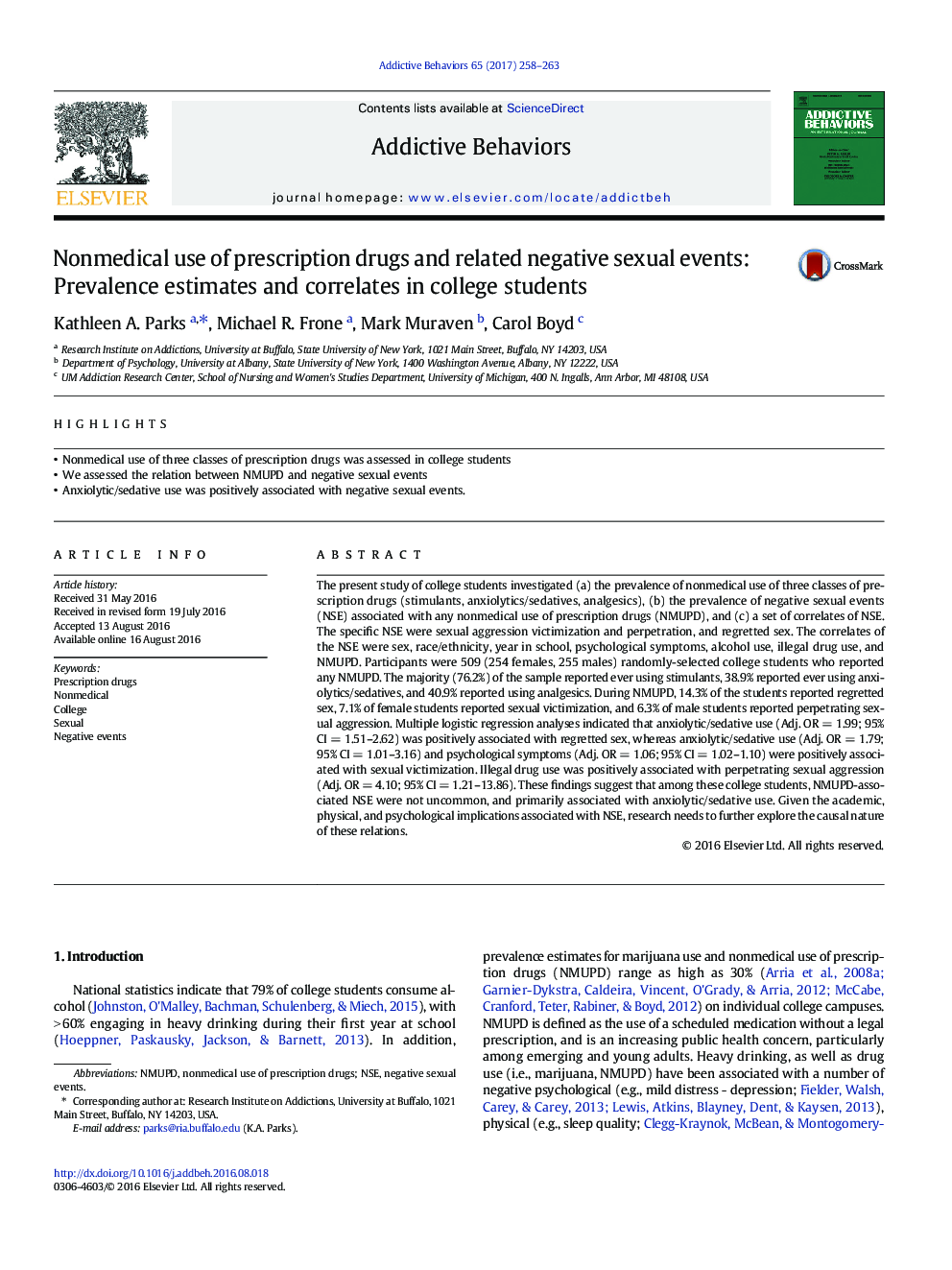| Article ID | Journal | Published Year | Pages | File Type |
|---|---|---|---|---|
| 5037920 | Addictive Behaviors | 2017 | 6 Pages |
â¢Nonmedical use of three classes of prescription drugs was assessed in college studentsâ¢We assessed the relation between NMUPD and negative sexual eventsâ¢Anxiolytic/sedative use was positively associated with negative sexual events.
The present study of college students investigated (a) the prevalence of nonmedical use of three classes of prescription drugs (stimulants, anxiolytics/sedatives, analgesics), (b) the prevalence of negative sexual events (NSE) associated with any nonmedical use of prescription drugs (NMUPD), and (c) a set of correlates of NSE. The specific NSE were sexual aggression victimization and perpetration, and regretted sex. The correlates of the NSE were sex, race/ethnicity, year in school, psychological symptoms, alcohol use, illegal drug use, and NMUPD. Participants were 509 (254 females, 255 males) randomly-selected college students who reported any NMUPD. The majority (76.2%) of the sample reported ever using stimulants, 38.9% reported ever using anxiolytics/sedatives, and 40.9% reported using analgesics. During NMUPD, 14.3% of the students reported regretted sex, 7.1% of female students reported sexual victimization, and 6.3% of male students reported perpetrating sexual aggression. Multiple logistic regression analyses indicated that anxiolytic/sedative use (Adj. ORÂ =Â 1.99; 95% CIÂ =Â 1.51-2.62) was positively associated with regretted sex, whereas anxiolytic/sedative use (Adj. ORÂ =Â 1.79; 95% CIÂ =Â 1.01-3.16) and psychological symptoms (Adj. ORÂ =Â 1.06; 95% CIÂ =Â 1.02-1.10) were positively associated with sexual victimization. Illegal drug use was positively associated with perpetrating sexual aggression (Adj. ORÂ =Â 4.10; 95% CIÂ =Â 1.21-13.86). These findings suggest that among these college students, NMUPD-associated NSE were not uncommon, and primarily associated with anxiolytic/sedative use. Given the academic, physical, and psychological implications associated with NSE, research needs to further explore the causal nature of these relations.
